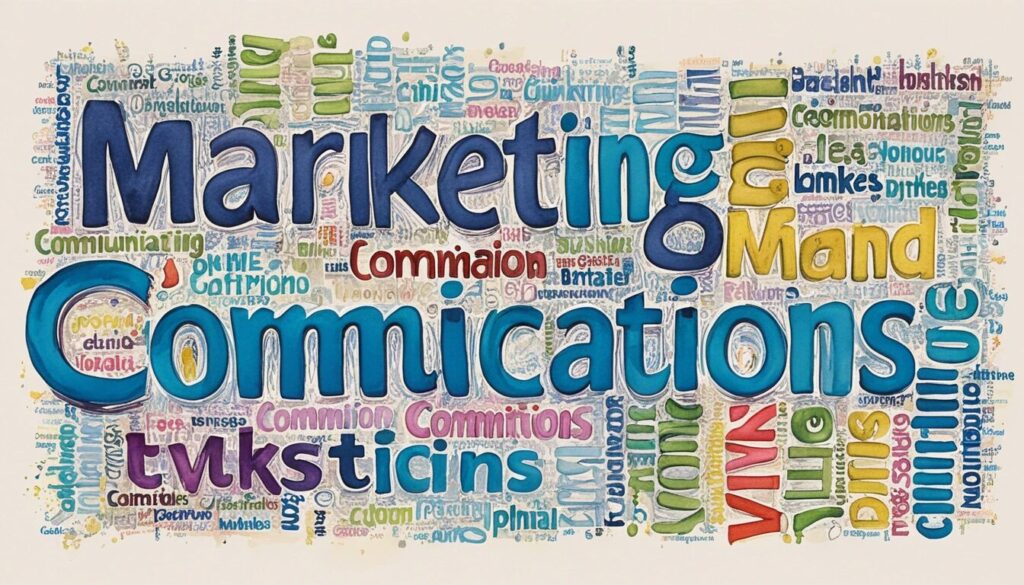What is Marketing Communication (MarCom)?
Marketing communication, often abbreviated as MarCom, is the lifeblood of any successful marketing strategy. It is how businesses share their message, connect with their audience, and drive action. Whether it’s through advertising, branding, or direct marketing, MarCom forms the bridge between a company and its target market. But it’s not just about sending messages—it’s about sending the right messages through the right channels at the right time. In today’s hyper-competitive landscape, understanding and mastering MarCom strategies can mean the difference between thriving and merely surviving.
At its core, MarCom serves two primary objectives: building product demand and preference, and shortening the sales cycle. These goals, while distinct, must work in harmony to create a cohesive and impactful marketing strategy. Let’s dive deeper into these objectives and the various components that make up an effective MarCom plan.
Key Components of Marketing Communication
- Advertising: Creating awareness and generating interest in your products or services.
- Branding: Establishing a unique identity that resonates with your target audience.
- Public Relations (PR): Managing your company’s reputation and building trust.
- Direct Marketing: Engaging customers through personalized communication.
- Digital Presence: Leveraging websites, social media, and email campaigns.
Marketing communication encompasses a wide range of tools and techniques. Advertising, for instance, is often the first touchpoint for potential customers. It grabs attention and lays the groundwork for further engagement. Branding, on the other hand, is about creating a lasting impression—something that sticks in the minds of your audience long after the initial interaction. PR activities help shape public perception, while direct marketing allows for a more personalized approach. Lastly, in today’s digital world, a strong online presence is non-negotiable. From social media posts to email campaigns, your digital footprint plays a crucial role in how your brand is perceived.
Building Product Demand and Preference
- Positioning: Claiming a unique space in your customer’s mind.
- Consistency: Ensuring uniformity across your product, pricing, and messaging.
- Long-Term Commitment: Developing a brand that stands the test of time.
Creating preference for your product or service is a marathon, not a sprint. It begins with positioning—staking out a unique and attractive space in your customer’s mind. This involves understanding your audience’s needs and aligning your offerings to meet those needs better than anyone else. Consistency is equally crucial. A cohesive approach across your product, pricing, and communication efforts builds trust and reinforces your brand identity. Over time, these efforts contribute to market share, profitability, and even your ability to attract top talent. Simply put, building demand and preference isn’t just a marketing goal; it’s a business imperative.
Shortening the Sales Cycle
- Understanding the Customer Journey: Mapping out the buying process.
- Customer Education: Providing relevant and timely information.
- Collaboration with Sales Teams: Aligning MarCom efforts with sales strategies.
The sales cycle can be a long and winding road, especially for high-tech products or services that require significant customer education. To shorten this journey, it’s essential to understand the steps your customers take when making a purchase decision. What questions do they have? What obstacles might they encounter? By answering these questions through targeted communication, you can guide them more efficiently through the process. Collaboration with sales teams is also vital. After all, they’re on the front lines and can provide valuable insights into customer behavior and preferences. Together, sales and MarCom teams can create a seamless experience that accelerates conversions.
Balancing Strategic Objectives
- Harmonizing Branding and Tactical Efforts: Avoiding lopsided strategies.
- Cross-Functional Collaboration: Working closely with sales and other departments.
- Measuring Effectiveness: Using analytics to refine your approach.
One of the biggest challenges in marketing communication is striking the right balance between building brand preference and shortening the sales cycle. Overemphasizing one at the expense of the other can undermine your overall strategy. For instance, focusing solely on tactical efforts to drive immediate sales may dilute your brand’s long-term value. Conversely, prioritizing branding without actionable tactics could leave your sales team struggling to close deals. The key is cross-functional collaboration. By working closely with sales, product teams, and even customer service, you can ensure your MarCom efforts are both strategic and effective. Analytics and performance metrics also play a crucial role in fine-tuning your approach.
Conclusion
Marketing communication (MarCom) is the cornerstone of any successful marketing strategy. It’s a dynamic and multifaceted discipline that involves everything from advertising and branding to digital marketing and public relations. At its heart, MarCom seeks to achieve two critical objectives: building product demand and preference, and shortening the sales cycle. Accomplishing these goals requires a delicate balance of strategic foresight and tactical execution.
As we’ve explored, creating a strong brand identity, educating customers, and aligning with sales teams are all essential components of an effective MarCom strategy. But perhaps the most important takeaway is this: marketing communication is not a one-size-fits-all endeavor. It requires a tailored approach that considers your unique audience, market conditions, and business objectives. So, whether you’re launching a new product or looking to strengthen your existing brand, make MarCom the foundation of your efforts. Start today, and let your message resonate with the people who matter most—your customers!
